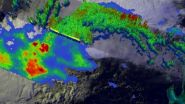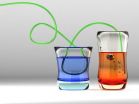(Press-News.org) Breast cancer can be classified into ten different subtypes, and scientists have developed a tool to identify which is which. The research, published in the journal Genome Biology, could improve treatments and targeting of treatments for the disease.
Cancer arises due to genetic changes which cause normal cells to develop into tumors. As we learn more about breast cancer, we are seeing that it is not one single disease – the mutations in the genes that cause different cancers are not alike, and this is why tumors respond differently to treatment and grow at different rates. Currently, there are two key markers that clinicians use to predict response to treatments.
Spotting the trends in tumor genetics and creating a system to diagnose tumor types is a primary objective of cancer scientists. To this end, researchers at Cancer Research UK and the University of Cambridge have been developing the IntClust system, which uses genomic technology to create a classification system with enough detail to more accurately pinpoint which type of breast cancer a patient has, and therefore what treatment would be most appropriate.
To test the system, the scientists looked at the 997 tumor samples they had used to develop the system, and 7,544 samples from public databases, along with the genomic and clinical data including data from The Cancer Genome Atlas. They classified these using their IntClust system, and the two main systems in use today – PAM50, which groups cancers into five types, and SCMGENE, which classifies cancer into four.
They found that IntClust was at least as good at predicting patients' prognosis and response to treatment as the existing system. But the system identified a previously unnoticed subgroup of tumors in just 3.1% of women with very poor survival rates, which appeared to be resistant to treatment. Identifying the genomic signatures for this group could flag up these high risk cancers early, and having the genomic data for these could aid in the investigation of new avenues for treatments for this type of cancer.
At present, using this system to classify tumors would be costly for most clinicians, and interpreting the results requires training that many clinical settings don't have access to. But the detail and accuracy of this system could be of great use to breast cancer researchers, who will be able to investigate the reasons that certain groups of cancer respond better to certain treatments, in order to find clinical markers, or to identify new targets for breast cancer treatments.
Raza Ali, lead author from Cancer Research UK Cambridge Institute, says: "We have developed an expression-based method for classification of breast tumours into the IntClust subtypes. Our findings highlight the potential of this approach in the era of targeted therapies, and lay the foundation for the generation of a clinical test to assign tumors to IntClust subtypes."
INFORMATION:
Media Contacts
Shane Canning
Media Officer
BioMed Central
T: +44 (0)20 3192 2243
E: shane.canning@biomedcentral.com
Notes to Editor
1. Research
Genome-driven integrated classification of breast cancer validated in over 7,500 samples
Hamid R Ali, Oscar M Rueda, Suet-Feung Chin, Christina Curtis, Mark J Dunning, Samuel AJR Aparicio and Carlos Caldas
Genome Biology 2014, 15:431
For a copy of the article during embargo period please contact Shane Canning (shane.canning@biomedcentral.com)
After embargo, article available at journal website here:
http://genomebiology.com/2014/15/8/431/abstract
Please name the journal in any story you write. If you are writing for the web, please link to the article. All articles are available free of charge, according to BioMed Central's open access policy.
2. Genome Biology serves the biological research community as an international forum for the dissemination, discussion and critical review of information about all areas of biology informed by genomic research. Key objectives are to provide a guide to the rapidly developing resources and technology in genomics and its impact on biological research, to publish large datasets and extensive results that are not readily accommodated in traditional journals, and to help establish new standards and nomenclature for post-genomic biology.
3. BioMed Central is an STM (Science, Technology and Medicine) publisher which has pioneered the open access publishing model. All peer-reviewed research articles published by BioMed Central are made immediately and freely accessible online, and are licensed to allow redistribution and reuse. BioMed Central is part of Springer Science+Business Media, a leading global publisher in the STM sector.
Better classification to improve treatments for breast cancer
2014-08-28
ELSE PRESS RELEASES FROM THIS DATE:
New study charts the global invasion of crop pests
2014-08-28
Many of the world's most important crop-producing countries will be fully saturated with pests by the middle of the century if current trends continue, according to a new study led by the University of Exeter.
More than one-in-ten pest types can already be found in around half the countries that grow their host crops. If this spread advances at its current rate, scientists fear that a significant proportion of global crop-producing countries will be overwhelmed by pests within the next 30 years.
Crop pests include fungi, bacteria, viruses, insects, nematodes, viroids ...
The Lancet journals: Three-quarters of depressed cancer patients do not receive treatment for depression but a new approach could transform their care
2014-08-28
Three papers published in The Lancet Psychiatry, The Lancet, and The Lancet Oncology reveal that around three-quarters of cancer patients who have major depression are not currently receiving treatment for depression, and that a new integrated treatment programme is strikingly more effective at reducing depression and improving quality of life than current care.
An analysis of data from more than 21 000 patients attending cancer clinics in Scotland, UK, published in The Lancet Psychiatry, found that major depression is substantially more common in cancer patients than ...
Better health care as important as controlling risk factors for heart health
2014-08-28
Hamilton, ON (August 27, 2014) – Keeping a healthy heart may have as much to do with the quality of health care you have available as it does you avoiding risk factors such as smoking, bad diet and little exercise.
A large international study led by researchers at the Population Health Research Institute at McMaster University and Hamilton Health Sciences has found a that low-income countries which have people with the lowest risk factors for cardiovascular problems have the highest rates of cardiovascular events and death, while the high-income countries of people with ...
Researchers investigating new treatment for multiple sclerosis
2014-08-27
MINNEAPOLIS – A new treatment under investigation for multiple sclerosis (MS) is safe and tolerable in phase I clinical trials, according to a study published August 27, 2014, in Neurology® Neuroimmunology & Neuroinflammation, a new online-only, freely accessible, specialty medical journal. The publication is part of the Neurology® family of journals, published by the American Academy of Neurology.
The phase I studies were the first to test the drug candidate in humans. Studies with animals showed that the drug, which is called anti-LINGO-1, or BIIB033, may be able to ...
Bundled approach to reduce surgical site infections in colorectal surgery
2014-08-27
Bottom Line: A multidisciplinary program (called a "bundle") that spanned the phases of perioperative care helped reduce surgical site infections (SSIs) in patients undergoing colorectal surgery (CRS) at an academic medical center.
Author: Jeffrey E. Keenan, M.D., of the Duke University Medical Center, Durham, N.C., and colleagues.
Background: SSIs are associated with increased complications, length of hospital stay, readmission rates and health care costs. Efforts that have used systematic approaches, called bundles, that aim to incorporate best practices across the ...
Photodynamic therapy vs. cryotherapy for actinic keratoses
2014-08-27
Bottom Line: Photodynamic therapy (PDT, which uses topical agents and light to kill tissue) appears to better clear actinic keratoses (AKs, a common skin lesion caused by sun damage) at three months after treatment than cryotherapy (which uses liquid nitrogen to freeze lesions).
Author: Gayatri Patel, M.D., M.P.H., of the University of California Davis Medical Center, in Sacramento, and colleagues.
Background: AKs are rough, scaly lesions on the skin typically found on individuals with fair complexions who have had lots of sun exposure. The lesions have the potential ...
APOE, diagnostic accuracy of CSF biomarkers for Alzheimer disease
2014-08-27
Bottom Line: Cerebral spinal fluid (CSF) levels of β-amyloid 42(Aβ42) are associated with the diagnosis of Alzheimer disease (AD) and (Aβ) accumulation in the brain independent of apolipoprotein E (APOE) gene makeup.
Authors: Ronald Lautner, M.D., of Sahlgrenska University Hospital, Sweden, and colleagues.
Background: With the emergence of biomarker dementia diagnostics, interest in CSF biomarkers associated with AD, including Aβ42 and tau proteins, is increasing. The APOE gene is the most prominent susceptibility gene for late-onset AD. For the ...
NASA's TRMM Satellite sees powerful towering storms in Cristobal
2014-08-27
VIDEO:
NASA's TRMM Satellite Sees Powerful Towering Storms in Cristobal On Aug. 26, NASA's TRMM Satellite saw a band of thunderstorms with heights of over 15km (about 9.3 miles) and was...
Click here for more information.
NASA's TRMM satellite identified areas of heavy rainfall occurring in Hurricane Cristobal as it continued strengthening on approach to Bermuda.
NASA's Tropical Rainfall Measuring Mission or TRMM satellite flew above Hurricane Cristobal on August 26 at 11:35 ...
Experiments explain why some liquids are 'fragile' and others are 'strong'
2014-08-27
Only recently has it become possible to accurately "see" the structure of a liquid. Using X-rays and a high-tech apparatus that holds liquids without a container, Kenneth Kelton, PhD, the Arthur Holly Compton Professor in Arts & Sciences at Washington University in St. Louis, was able to compare the behavior of glass-forming liquids as they approach the glass transition.
The results, published in the August 6 issue of Nature Communications, are the strongest demonstration yet that bulk properties of glass-forming liquids, such as viscosity, are linked to microscopic ...
Novel 'butterfly' molecule could build new sensors, photoenergy conversion devices
2014-08-27
TALLAHASSEE, Fla. — Exciting new work by a Florida State University research team has led to a novel molecular system that can take your temperature, emit white light, and convert photon energy directly to mechanical motions.
And, the molecule looks like a butterfly.
Biwu Ma, associate professor in the Department of Chemical and Biomedical Engineering in the FAMU-FSU College of Engineering, created the molecule in a lab about a decade ago, but has continued to discover that his creation has many other unique capabilities.
For example, the molecular butterfly can flap ...


